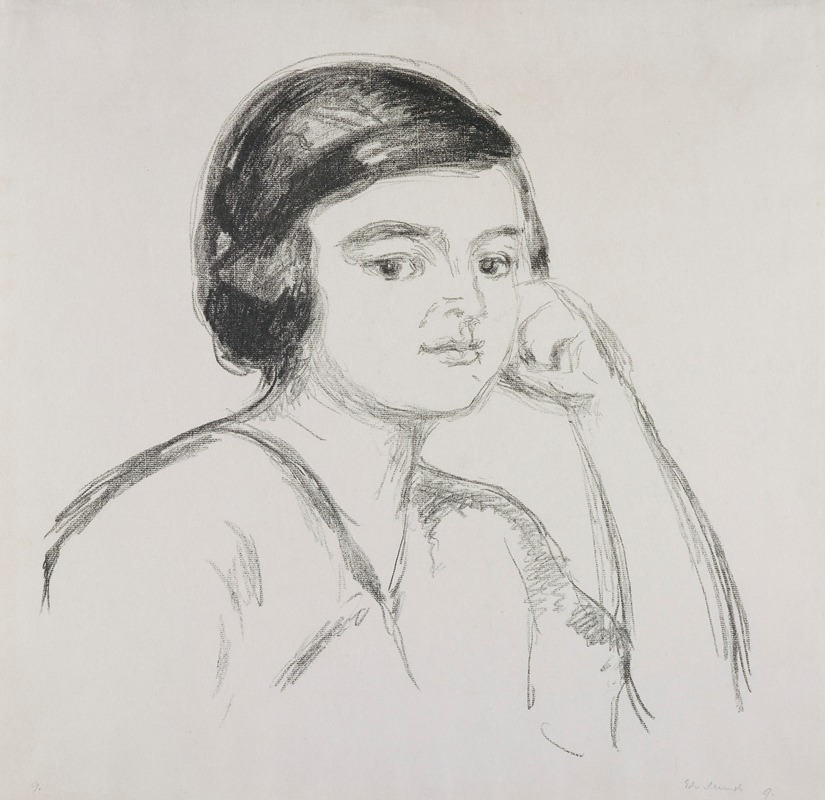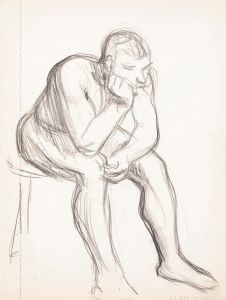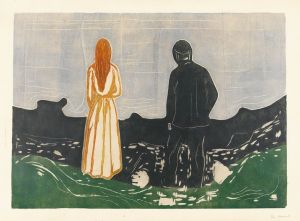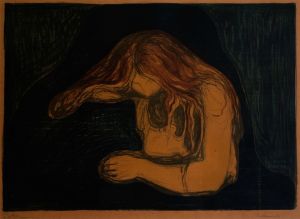
Young Woman with Hand on her Cheek
A hand-painted replica of Edvard Munch’s masterpiece Young Woman with Hand on her Cheek, meticulously crafted by professional artists to capture the true essence of the original. Each piece is created with museum-quality canvas and rare mineral pigments, carefully painted by experienced artists with delicate brushstrokes and rich, layered colors to perfectly recreate the texture of the original artwork. Unlike machine-printed reproductions, this hand-painted version brings the painting to life, infused with the artist’s emotions and skill in every stroke. Whether for personal collection or home decoration, it instantly elevates the artistic atmosphere of any space.
"Young Woman with Hand on her Cheek" is a painting by the renowned Norwegian artist Edvard Munch, who is best known for his iconic work "The Scream." Munch was a pivotal figure in the Symbolist and Expressionist movements, and his work often explored themes of existential anxiety, love, and death. Although Munch's oeuvre is extensive, not all of his works are as well-documented or as widely studied as "The Scream."
"Young Woman with Hand on her Cheek" is one of Munch's lesser-known works. It features a young woman depicted in a contemplative pose, with her hand resting on her cheek. This pose is a common motif in art, often used to convey introspection or melancholy. The painting reflects Munch's characteristic style, which frequently includes bold colors, expressive brushwork, and an emotional intensity that seeks to convey the psychological state of the subject.
Munch's art was heavily influenced by his personal experiences and the emotional turmoil he faced throughout his life. Born in 1863 in Loten, Norway, Munch experienced significant loss and trauma from a young age, including the death of his mother and sister from tuberculosis. These events had a profound impact on his work, leading him to explore themes of illness, death, and emotional suffering.
The exact date of creation for "Young Woman with Hand on her Cheek" is not well-documented, but it is consistent with Munch's style from the late 19th to early 20th century. During this period, Munch was developing his unique approach to painting, which would later influence a generation of Expressionist artists. His work often featured solitary figures set against abstract or simplified backgrounds, emphasizing the emotional state of the subject over realistic representation.
Munch's use of color in "Young Woman with Hand on her Cheek" is likely to be expressive rather than naturalistic, a hallmark of his style. He often employed a vivid palette to evoke mood and emotion, using color as a tool to delve into the psychological depth of his subjects. This approach aligns with the broader Symbolist movement, which sought to express the inner experiences of the mind rather than depict the external world.
While "Young Woman with Hand on her Cheek" may not be as famous as some of Munch's other works, it nonetheless embodies the themes and techniques that define his artistic legacy. Munch's influence extends beyond his paintings; his exploration of psychological themes and his innovative use of color and form have left a lasting impact on the development of modern art.
Munch continued to work prolifically until his death in 1944, leaving behind a vast body of work that includes paintings, prints, and drawings. His art remains a subject of study and admiration, with exhibitions and retrospectives held worldwide. "Young Woman with Hand on her Cheek," like many of Munch's works, invites viewers to reflect on the complexities of human emotion and the universal experiences of introspection and contemplation.


















